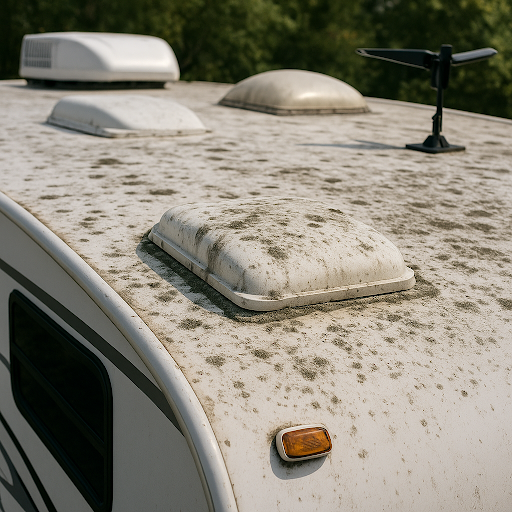Dry rot may not be something most RV owners think about—until it's too late. It’s a form of wood decay caused by a specific fungus that thrives in damp, poorly ventilated environments. And unfortunately, RVs are especially vulnerable. With wood-framed ceilings, walls, and roof structures, just a little water intrusion can create the perfect environment for dry rot to spread.
At Elite RV Roof & Collision, we’ve seen firsthand how quickly this kind of damage can escalate. If your RV roof isn’t properly sealed and maintained, moisture can sneak in through the smallest cracks or seams—especially around vents, skylights, and other penetrations.
How Moisture Turns Into a Major Problem
The problem with dry rot is that it often starts slowly and silently. Maybe a sealant failed. Maybe a storm passed through while your RV was in storage. Regardless of how it starts, the effects build over time—especially if the vehicle sits unused for a season or is stored outdoors.
Common signs you may have a dry rot issue:
- Spongy or soft spots on the roof when walked on
- Discoloration or stains on your RV’s ceiling
- Musty smells, especially after rain
- Visible cracks or bubbling in the roof material
Class C motorhomes are particularly vulnerable due to the overhead sleeping area and extra seams where leaks are more likely. But no RV is completely immune.

